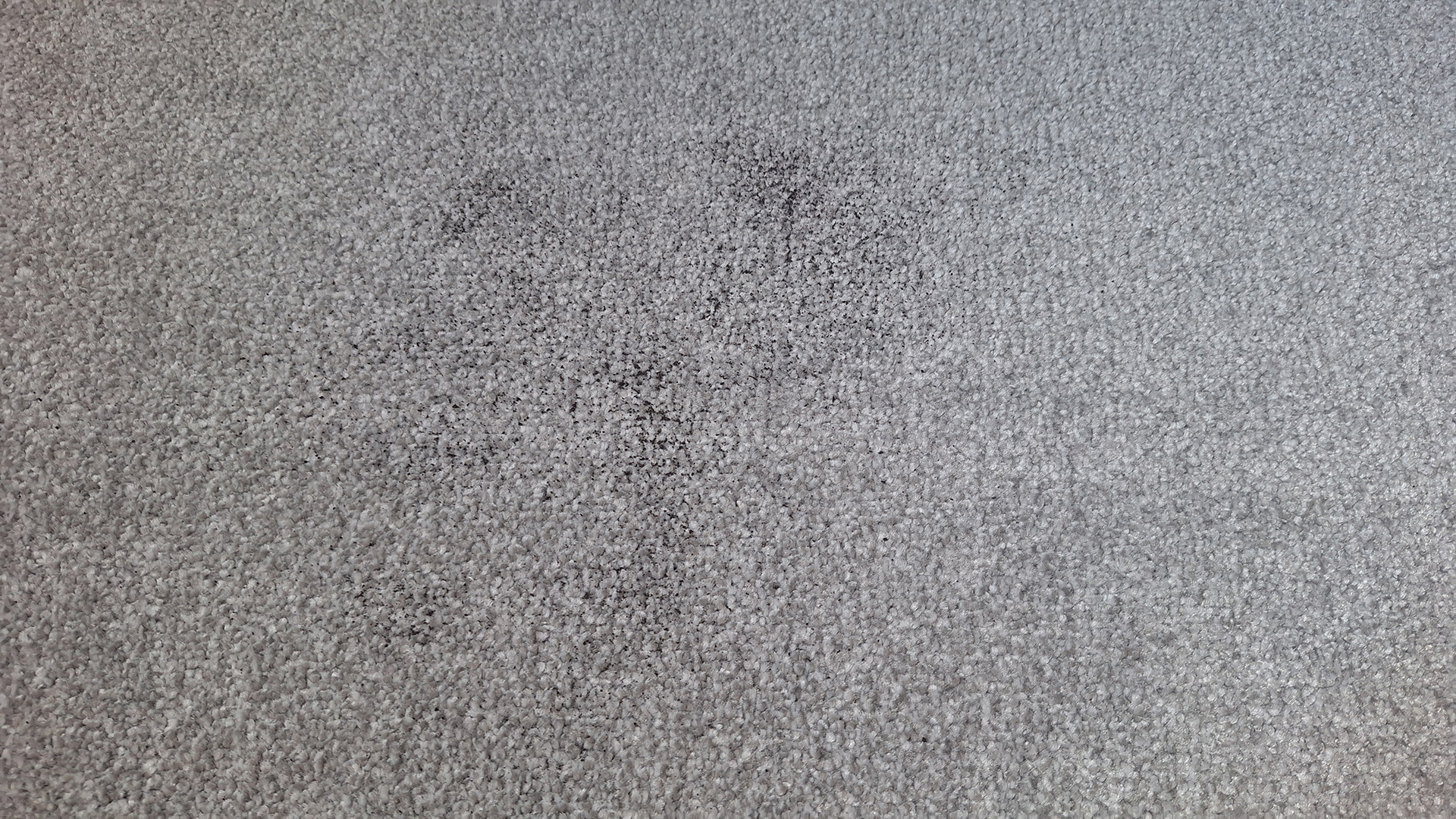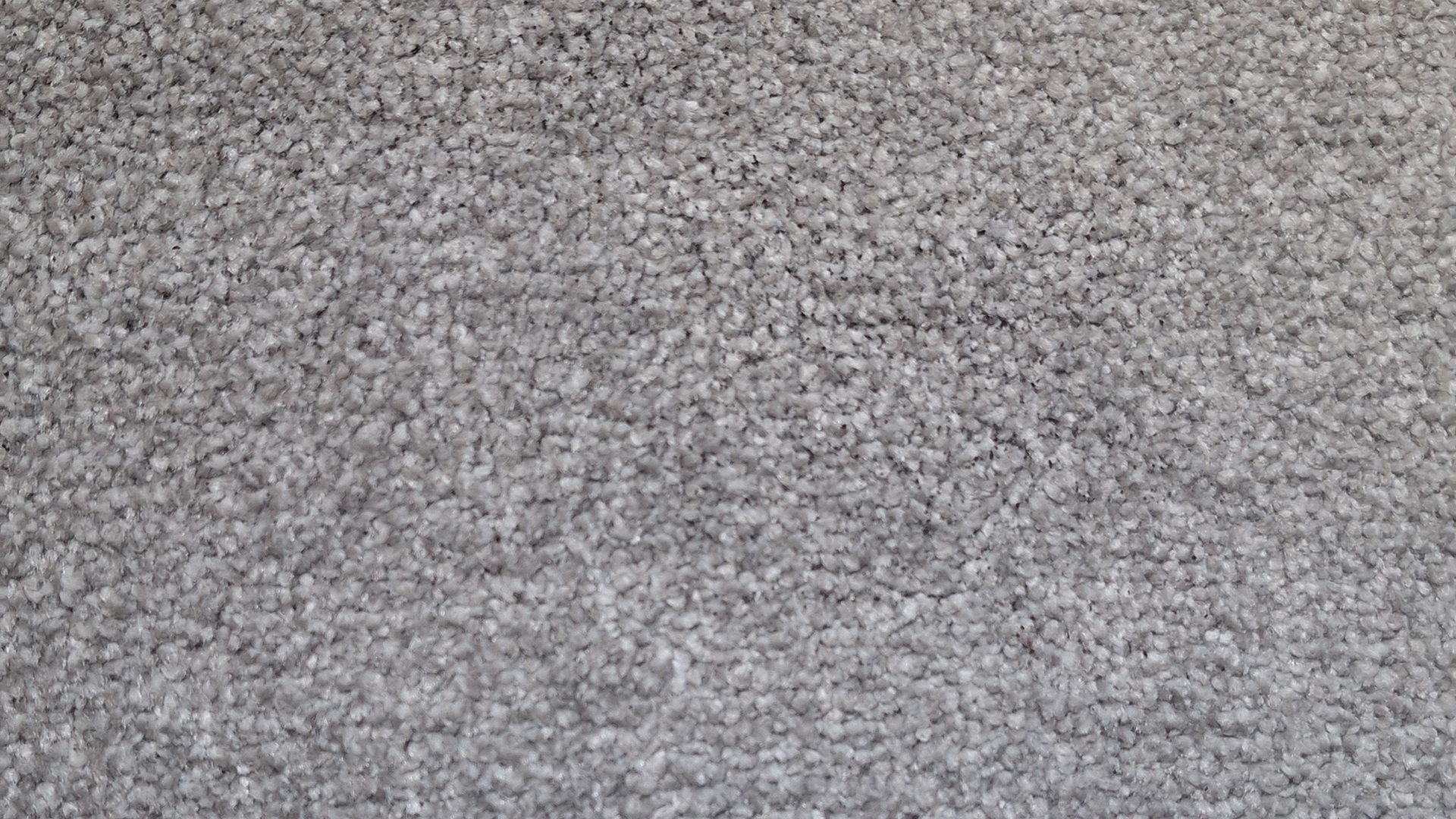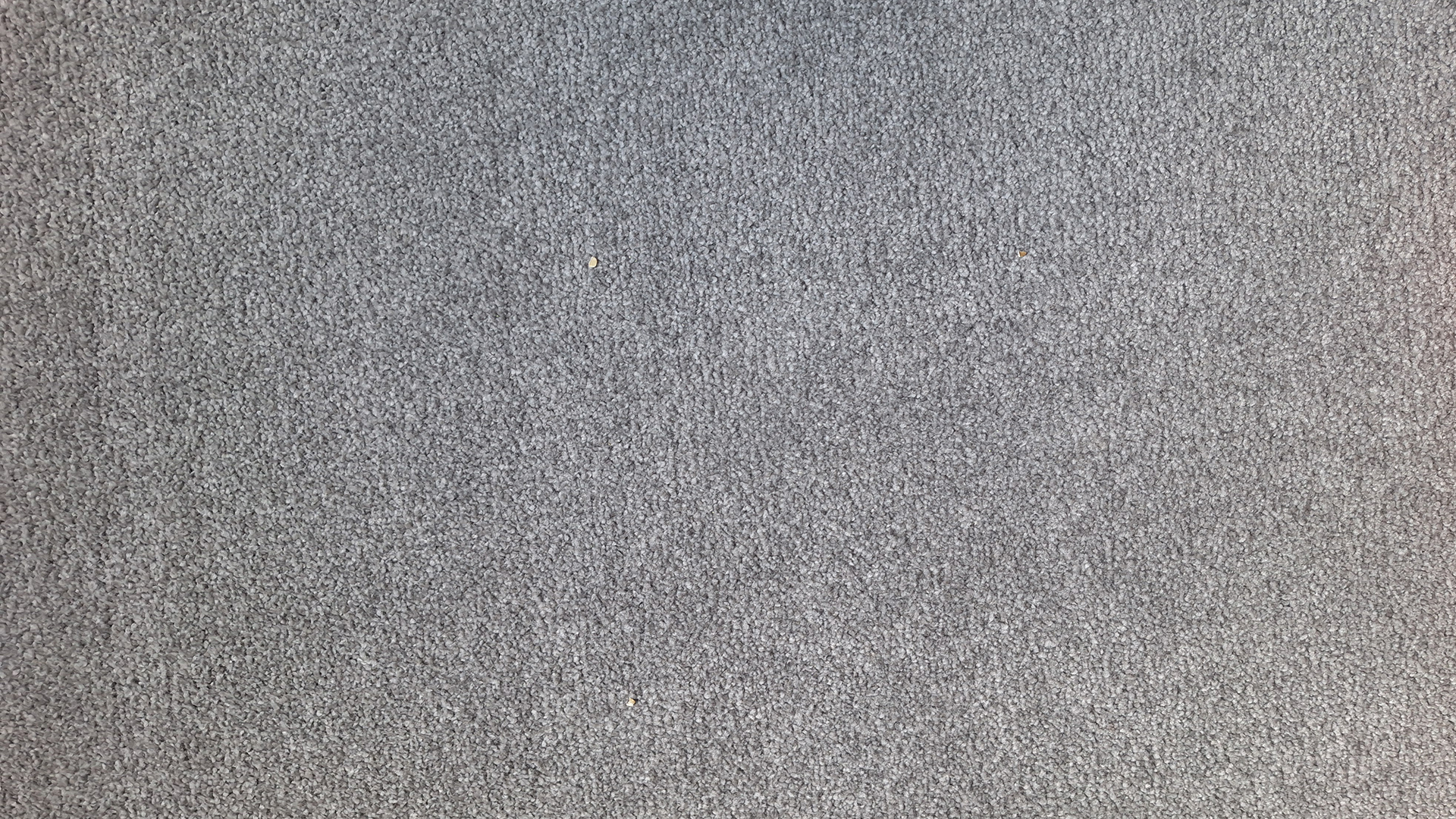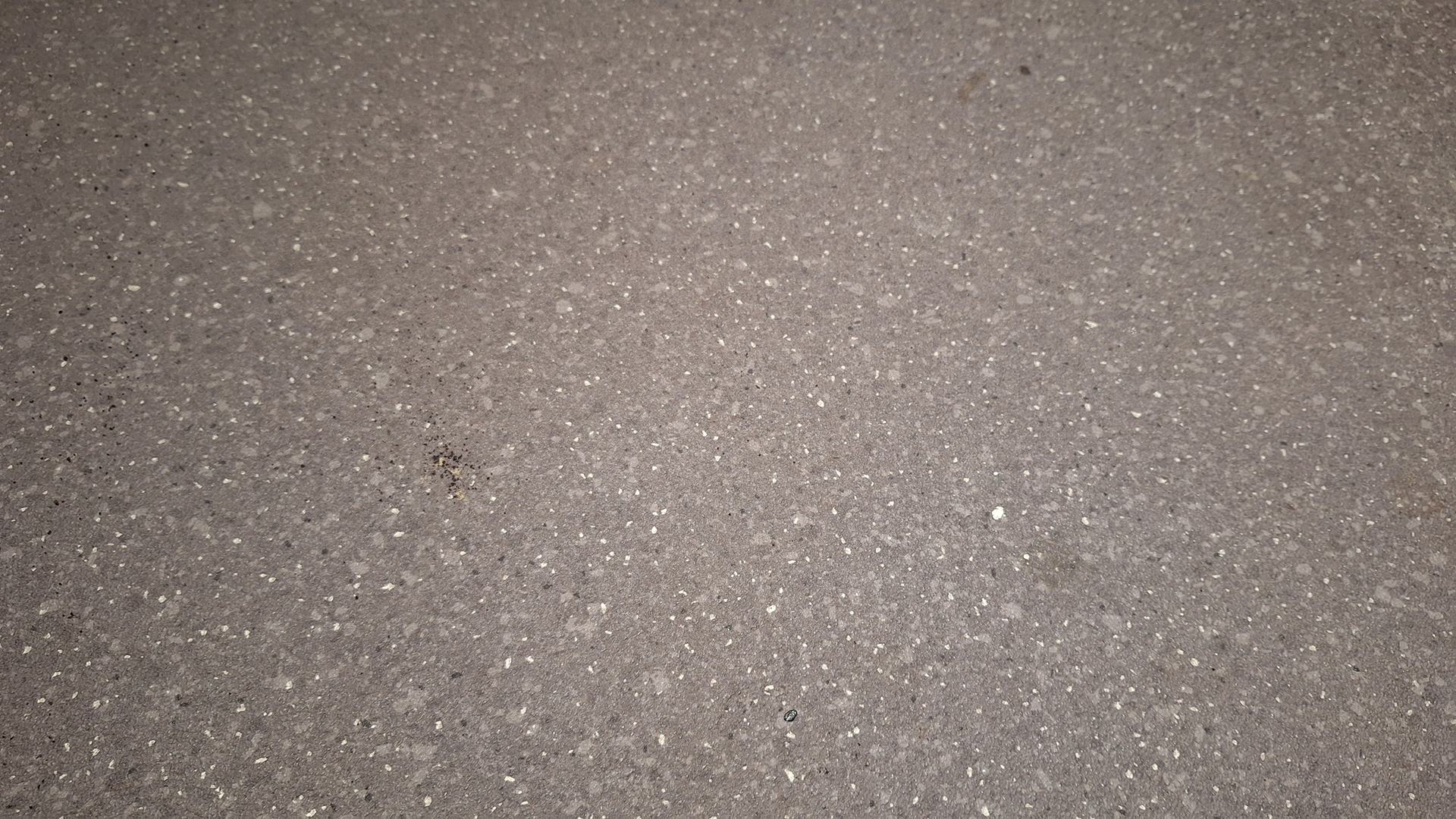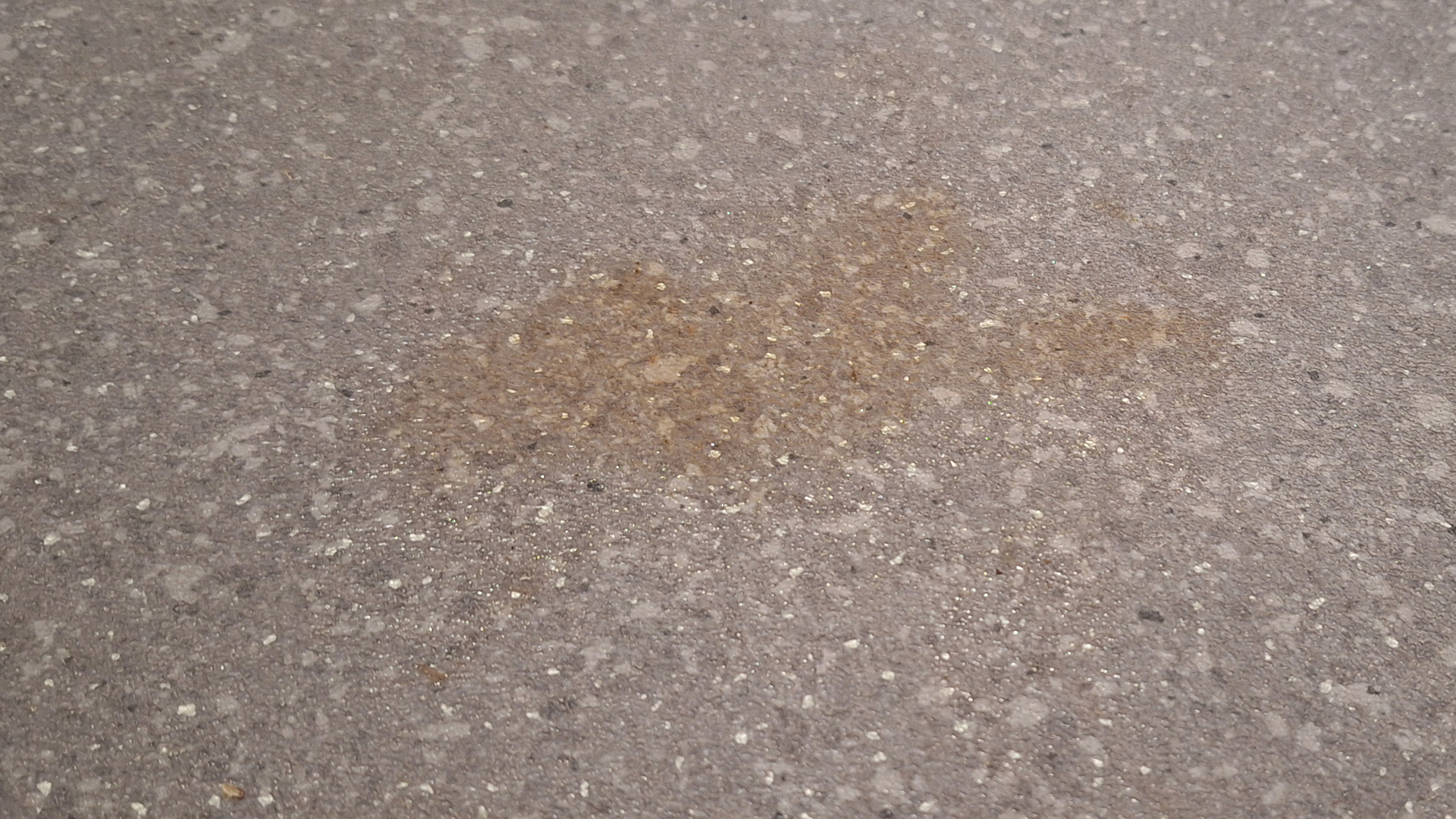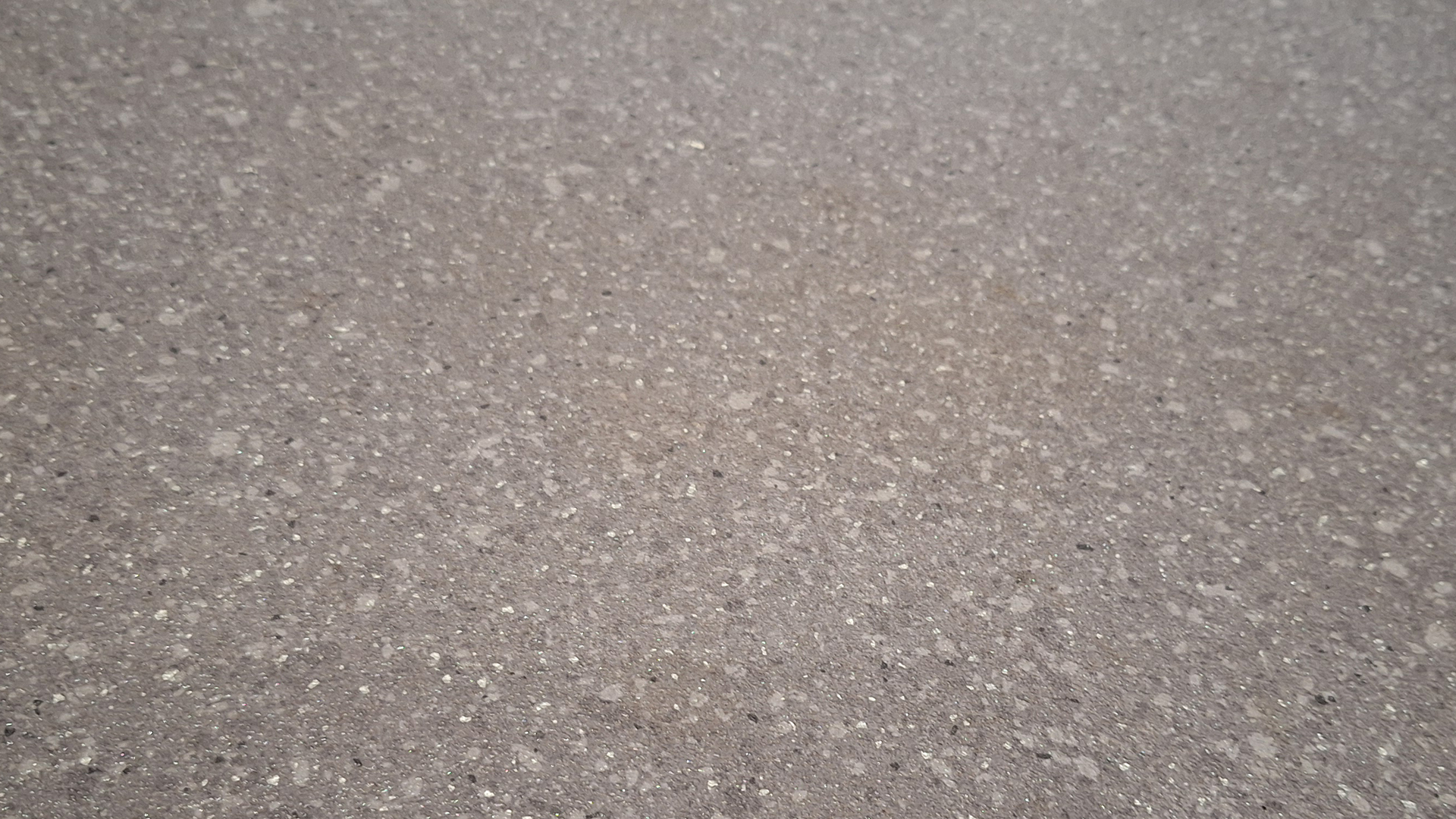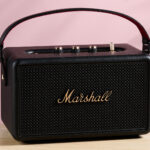Why you can trust TechRadar
We spend hours testing every product or service we review, so you can be sure you’re buying the best. Find out more about how we test.
Roborock Saros Z70: two-minute review
The Roborock Saros Z70 is the first robot vacuum on the market to feature a robotic arm, which means it can tidy away your clutter as well as clean your floors. That’s the theory, anyway – my initial tests found the tech still has a little way to go, at least when it comes to autonomous pincering.
Most people I talk to about this robovac seem afraid that the OmniGrip will be over-zealous, and try to tidy away the cat. I had quite the opposite problem: I couldn’t get it to automatically tidy away anything at all. The current list of objects it can handle is very short, and the “conditions” have to be perfect in order for it to be successful. However, there’s potential: controlling the robotic arm remotely via the app works very well, and Roborock is busy improving the service, with more functions, bug fixes, and supported objects in the pipeline.
Elsewhere, the performance is up there with the very best robot vacuums on the market. Suction is excellent, the setup painless, and the dock takes care of the vast majority of maintenance tasks for you, including washing the mop pads with hot water. Speaking of which, I was especially impressed with the Saros Z70’s mopping ability. It comes courtesy of two spinning mop pads, one of which kicks out to the side to clean right up to the edges of rooms, as well as under the perimeter of cabinets.
This bot uses Roborock’s StarSight system for navigation, which means no raised puck, enabling the robot to venture under low-sitting furniture. I’m happy to report I didn’t see any compromise in performance as a result of this new(ish) system – the Z70 navigated accurately and reliably throughout my review period.
That’s all great, but the reason to buy this model will be for the robo-arm tech. (If you don’t need that, you could go for one of the sister models launched at the same time – the Roborock Saros 10 and Saros 10R – and get the same excellent performance at a much lower price.) And while it shows plenty of potential, right now it’s a little difficult to recommend the Z70 on that basis. That’s the short version; read on for my full Roborock Saros Z70 review.
Roborock Saros Z70 review: price & availability
- List price: $2,599 / £1,799 / AU$3,999
- Launched: Jan 2025 (on sale May 2025)
- Available: AU, US
The Roborock Saros Z70 was announced at CES in January 2025, and went on sale in Australia and the US in May 2025. At list price it costs $2,599 / £1,799 / AU$3,999.
While it’s common for flagship robot vacuums these days to cost over a grand in the US and UK, this is the most expensive robot vacuum we’ve tested to date. (It’s worth noting that US tariff changes have had a negative impact on pricing; the Z70 is more expensive now than Roborock had planned.)
I’m not overly surprised by its high price. Roborock is introducing a completely new technology, alongside an additional mechanical component. Based on the prototype models we saw at CES in January, there may well be more arm-equipped robovacs hitting the market over the next year or two, but currently the Saros Z70 is your only option. In terms of quality and innovation, it’s a standout robovac; but you’re paying a premium for the newness of the tech.
However, if you don’t need the arm then I’d give it a wide berth. There are plenty of premium robot vacuums on the market offering the same features. They’ll just as good a job of cleaning your floors, they just won’t be able to tidy away your socks. Arm-less alternatives include Z70’s sister model, the Roborock Saros 10, which costs $1,599.99 / £1,499.99, or a model such as the Dreame L40 Ultra for $1,499.99 / £999.
New robot vacuums are being launched all the time, and the competitiveness of the market means you can generally avoid paying list price if you’re willing to be patient. However, I’m not convinced deals will be quite so forthcoming with the Z70, just because the offering is currently so unique. That said, there is early bird pricing available at time of writing.
- Value for money score: 3.5 out of 5
Roborock Saros Z70 specs
|
Max suction: |
22,000Pa |
|
Robot W x D: |
13.8 x 13.9in / 35 x 35.3cm |
|
Robot height: |
3.1in / 8cm |
|
Dock dimensions (W x D x H): |
15 x 18.7 x 19.2in / 38.1 x 47.5 x 48.8cm |
|
Dust bin volume (bot): |
180ml |
|
Dust bin volume (base): |
2.5L |
|
Water tank volume: |
4L (clean), 3L (dirty) |
|
Base type: |
Charge, empty dust, clean and dry mop pads, self-clean, dispense detergent |
|
Max threshold height: |
1.6in / 4cm |
|
Mop pad lifting: |
0.9in / 2.2cm |
Roborock Saros Z70 review: design
- Pincer arm can extend to pick things up, or retract when not required
- StarSight navigation means there’s no raised LiDAR puck
- Comprehensive dock takes care of most maintenance
Let’s start with the obvious here: the Roborock Saros Z70 comes with a big mechanical arm known as the OmniGrip. On the end of it is a pincer that’s designed to gently but securely grip and lift objects weighing up to 300g. To avoid unwanted pincering, OmniGrip features are switched off my default. You’ll need to define exactly what you want the arm to do, or else it won’t do anything at all.
The idea is that it can pick small objects such as socks and tissues off your floor, and either move them out of the way for more complete vacuuming, or tidy them to a location of your choosing. Alternatively, because Roborock has recognized most of us are basically big kids, you can remote control the arm via the companion app, just for fun and frolics.
There’s also a camera mounted on the OmniGrip’s arm, to supplement the one on the front of the robovac. This helps with locating objects for grabbing and also expands the bot’s security capabilities by enabling you to switch to the arm camera to get a higher-level view of your home. When not in use, the arm folds neatly back into the main body of the bot, to be hidden beneath a hatch. You’d never even know it was there.
This bot uses Roborock’s StarSight technology for navigation, which also appears on models such as the Saros 10R and Qrevo Slim. Essentially it means that the bot is no longer reliant on a raised LiDAR puck. So with the arm tucked into its hidey-hole, the top of this robovac is completely flush, making the whole unit just 7.98cm tall. That means it can clean under low furniture that’s inaccessible to taller bots.
The rest of the robot looks rather like many of Roborock’s other premium models. Flip over the unit and you’ll find a single, all-rubber roller and a side brush, both designed to avoid becoming tangled with long hair. This is achieved in the latter simply by positioning the brushes at an angle to the central axis, rather than radiating directly outwards, so the hair can slip off easily (hopefully into the main suction path). In mopping mode, both can lift up into the body of the robot, so they don’t end up full of gunk.
As mentioned, as a hybrid model the Saros Z70 also has mopping abilities. These are courtesy of two spinning mop-covered discs, one of which can kick out to clean right up close to your room’s baseboards. The mop pads can also lift when traversing carpet, or be dropped off in the base, so there’s no danger of damp rugs at all.
Over the past year or so, we’ve seen a focus on improving how robot vacuums tackle more raised room thresholds, and Roborock is included. Like most of the brand’s newest models, the Saros Z70 has an “AdaptiLift Chassis” whereby the left, right and front wheels can all raise or lower independently, enabling the bot to traverse over thresholds up to 4cm in height.
On to the dock. The Saros Z70’s dock contains two large water tanks – one for clean water, one for dirty water – plus a smaller tank into which you can add detergent. These sit at the top and are directly accessible, rather than being hidden behind a hatch. There’s also dust bag, which is hidden away.
The base is designed to be able to take care of as much robot maintenance as possible. When the robot docks, it will automatically empty its small onboard dustbin, refill its water tanks with warm water, and dispense detergent (if you’ve added it). It can wash the mop pads with hot (176ºF/80ºC) water – intelligently determining how dirty they are and extending cleaning times if necessary – and dry them with warm (131ºF/55ºC) air. It will also clean itself with hot (176ºF/80ºC) water, and the base is detachable for when you want to give it deeper clean. Finally, it offers speedy charging in just 2hrs 30mins.
It’s one of the better-looking docks on the market right now. I miss the mirrored front that features on sister model, the Roborock Saros 10, although this matte version does mean any mess or clutter isn’t reflected back at you.
- Design score: 4.5 out of 5
Roborock Saros Z70 review: performance
- Arm works well when manually controlled, but automation is unreliable
- Vacuuming, mopping and navigation all excellent
- Review model emits a rattling noise when cleaning
I started by performing the “Quick mapping” process, which was fast and painless, as I’ve come to expect from Roborock. The bot wandered into each room, looked around a bit, and I could see the map forming on the app as it went. Once complete, it assigned suggested rooms. It was broadly correct, but I was able to edit to split the main living space into a kitchen and living room, and re-label any spaces that weren’t quite right.
Then I sent the bot off on a whole-flat vacuum and mop, using the default modes. It did a stellar job of navigating its way around. Roborock bots are generally great at this, but this is the first one I’ve reviewed that uses StarSight for navigation rather than traditional LiDAR. I’m happy to report I couldn’t see any compromises in performance with this new system.
However, less positive was the irritating rattling sound the Saros Z70 made as it went about its business. You can hear it in the video clip below. I assume this is the result of the retracted arm or the lid; either way, it’s not ideal, and not a problem I’ve experienced with any of the other arm-less robovacs I’ve tested.
OmniGrip arm
It’s the USP here, so let’s get on to OmniGrip arm – and whether or not it does what Roborock says it will. At time of review, the list of items suitable for pickup is short: socks, sandals (not shoes, in general), crumpled tissues and towels under 300g. Roborock plans to add more objects in due course, via firmware updates.
I started by remote-controlling the bot over to a cloth. With the cloth in its peripheral vision, it had no trouble taking over the final part itself, successfully navigating over to it and picking it up, at which point I could resume control and move it over to where I wanted it. There’s potential for this to be helpful for those with mobility issues.
For the most part, however, you’d want this robot to take care of moving things autonomously. These functions can be toggled on in the “Robotic Arm options” section of the app (all are off by default), and you can ask it to move objects out of its cleaning path, so it doesn’t have to skip that area, and/or to move specific items into areas designated by you. At the moment, the suggestion is that you use a (provided) cardboard Roborock “bin” for socks and crumpled paper, and then set a “shoe zone” for footwear.
The trouble is that conditions need to be perfect for the bot to actually clear anything away… so much so, that I’ve yet to have a successful run. First, the robot has to correctly identify objects it can move. I found this was fairly accurate in bright light, but when I tried it one evening in a less well-lit room, it identified two sandals and a sock all as “Carry out bags” and thus didn’t try to pick them up at all.
Next, it needs to be able to pick up said objects. It failed to pincer a strappier sandal, and on successfully picking up another, it swung it into a doorstop, causing the strap to become twisted. I had to reset it manually (on the robot itself) following a repeated warning message.
Finally, it has to find its way to the designated areas. It seems a little unsure on this front at the moment. On one more successful run, it identified, returned to and successfully pincered some socks – only to spin around once and then put them back down 14 inches from their original position.
As I said earlier, Roborock is working on improving the arm function and I’m optimistic about the potential of this tech and the brand’s ability to deliver on it. This is a new technology and Roborock is the first to bring it to market, so it isn’t surprising that there are kinks to be ironed out. However, these issues make the Z70 difficult to recommend.
I’ll be continuing to test this robovac and will update this review with a more complete picture of the arm’s functionality once I’ve had more time with it.
Vacuuming
Moving on to more mundane (but still important) functions. How well does the Saros Z70 clean?
Given that the Saros Z70 boasts a massive 22,00Pa of suction power – matching the very highest you’ll see anywhere – I had high hopes for this bot’s cleaning ability. In general use, it seemed to do a very efficient job of vacuuming my apartment’s medium-pile carpet, low-pile carpet and lino.
For a more objective view of its cleaning powers, I ran TechRadar‘s standard suction tests. I started by sprinkling oats and loose tea on my carpet, and setting it on a selective zone clean. There are four settings to choose from: Quiet, Balanced, Turbo and Max.
I ran one clean on Turbo, with the bot clearing almost all the oats and most of the tea, leaving only a sprinkling nestled in the carpet fibers. (The tea test is purposefully very challenging.) I then bumped up the robovac’s setting to Max for a second clean, and it sucked up all but a single oat flake, and a few particles of tea. This is an excellent result.
I repeated the test on a lino floor. Since clearing debris off a hard floor is far less challenging, this time I used Balanced mode. It cleared almost everything on the first pass, with the second required only to capture the remnants that had been flicked around on the initial run.
Mopping
Next, I moved on to the mopping test. For this, I spread a tiny amount of ketchup on a lino floor and left it to dry a little. You can select Low, Medium or High waterflow levels, or for more control you can opt for a “Custom” mode, which lets you select a waterflow between 1 (Slight) and 30 (extreme). That level of control is excellent, opening this bot up as an option for cleaning delicate floors that can deal with only a tiny bit of water, for example.
I used “High” waterflow, and instructed the Z70 to clean the selected zone twice. It removed some of the ketchup on the first pass, and most of the remainder on the second pass. However, a light film of ketchup remained, and needed wiping away manually. I’ve yet to find a robot vacuum at any price that can deal with challenging or dried-on spillages.
In general use, I found the Z70’s mopping very effective. The pads saturated fully, and I could see they were cleaning the whole floor, without leaving any gaps. One of the mop pads would also regularly kick out to clean up close to the edges of rooms and under the edge of my fridge or cabinets. I found it far more effective than the static, D-shaped pads found on some robovacs.
I also appreciated the way the robot would automatically drop off its mop pads in the dock when embarking on a vacuum run. While the auto-lifting was reliable, I’m always just a little more comfortable when there are no damp mops in the vicinity of my carpet.
Dock functionality
The dock is designed to take care of most of the Z70’s maintenance needs, and in my tests I haven’t had any issues with its effectiveness, save for the fact some of the functions can be a little noisy.
I’m on the fence about whether washing the mops with hot water is something that’s really required of the dock – I’d still give the pads a run through the washing machine periodically, regardless of whether or not this function is included. Self-cleaning takes around 3 mins 21 secs, although it’s programmed to take longer if it senses the mop pads aren’t clean at the end of that.
One benefit is that charging is remarkably speedy. I was recharging a Dyson manual vacuum at the same time, and found that the Saros Z70 juiced up far quicker than the Dyson.
- Performance score: 3.5 out of 5
Roborock Saros Z70 review: app
- Easy to use OmniGrip arm via remote control through the app
- Well-designed and usable app with lots of customization options
- So many options it can be a little tricky to find them all
Most control of the robovac is like to take place via the Saros Z70’s companion app. One welcome addition here is the ability to use it to remote-control the OmniGrip arm. You drive it like a remote control car, navigating by using the view from the bot that you can see on your screen. If you spot something you want it to move, you can maneuver it into the vicinity and ask the bot to pick it up. It will do this automatically, but it’s also possible to precisely adjust the angles of both the arm and the pincer, if required.
In my tests, I found all this reliable and straightforward, although the incessant repetition of “Remote viewing active” will mean you won’t want to play with it for too long. (I haven’t yet been able to find a way to switch this off.)
You can also switch views between the camera on the front of the robot and the mounted on the arm, which offers a view from higher up. The idea is to make it more useful as a security bot while you’re out of the house.
In general, Roborock has done a great job of integrating the OmniGrip options into the app, making it as easy as possible to get started using the arm. The settings are simple to find and to switch on and off; they’re straightforward to understand, even if the automated performance is still a little patchy.
Elsewhere, the app is well designed and intuitive. There are plenty of precise customization options – so many, in fact, that it can take a while to explore them all. If you don’t want to mess around in Settings, there’s a “SmartPlan” mode that automatically analyzes the environment and cleaning history and uses that information to apply the settings it thinks will work best. There’s also a built-in voice assistant, which you activate by saying “Hello Rocky”.
Should you buy the Roborock Saros Z70?
|
Attribute |
Notes |
Rating |
|---|---|---|
|
Value |
Wildly expensive, but this isn’t surprising given it’s the only robovac with an arm right now. If you don’t want the arm, you can get excellent bots for far less. |
3.5 / 5 |
|
Design |
Combines most of the advanced features from the best robot vacuums on the market and adds a retractible pincer arm for good measure. |
4.5 / 5 |
|
Performance |
Pincer works well when remote-controlled, but automation is unreliable at the moment. Vacuuming, mopping and navigation are excellent. |
3.5 / 5 |
|
App |
Well designed and intuitive, with arm functions front-and-center. |
4.5 / 5 |
Buy it if…
Don’t buy it if…
Roborock Saros Z70: alternatives to consider
| Header Cell – Column 0 |
Roborock Saros Z70 (reviewed) |
Roborock Saros 10 |
Dreame L40 Ultra |
|---|---|---|---|
|
Max suction: |
22,000Pa |
22,000 Pa |
11,000Pa |
|
Robot W x D: |
13.8 x 13.9in / 35 x 35.3cm |
13.8 x 14in / 35 x 35.3cm |
13.8 x 13.8in / 35 x 35cm |
|
Robot height: |
3.1in / 8cm |
3.1in / 8cm |
4.1in / 10.4cm |
|
Dock dimensions (W x D x H): |
15 x 18.7 x 19.2in / 38.1 x 47.5 x 48.8cm |
16 x 17.3 x 18.5in / 41 x 44 x 47cm |
18 x 13.4 x 23.3in / 45.7 x 34 x 59.1cm |
|
Dust bin volume (base): |
2.5L |
2.5L |
3.2L |
|
Water tank volume: |
4L clean, 3L dirty |
4L clean, 3.5L dirty |
4.5L clean, 4L dirty |
|
Base type: |
Charge, empty dust, refill water, dispense detergent, wash and dry mops, self-clean |
Charge, empty dust, refill water, dispense detergent, wash and dry mops, self-clean |
Charge, empty dust, refill water, dispense detergent, wash and dry mops, self-clean |
How I tested the Roborock Saros Z70
I used the Roborock Saros Z70 over the course of two weeks as my main vacuum. During this time, I tested all the OmniGrip arm functions, as well as assessing the bot’s general cleaning powers and usability. I ran TechRadar‘s standard vacuuming and mopping tests, using oats and loose tea, to see how its cleaning compares to other models. I also spent time digging into the app and exploring the options available. Through all this, I compared my experience with other robot vacuums I’ve reviewed, from other brands and at different price points.
Read more about how we test robot vacuum cleaners
Read the full article here







